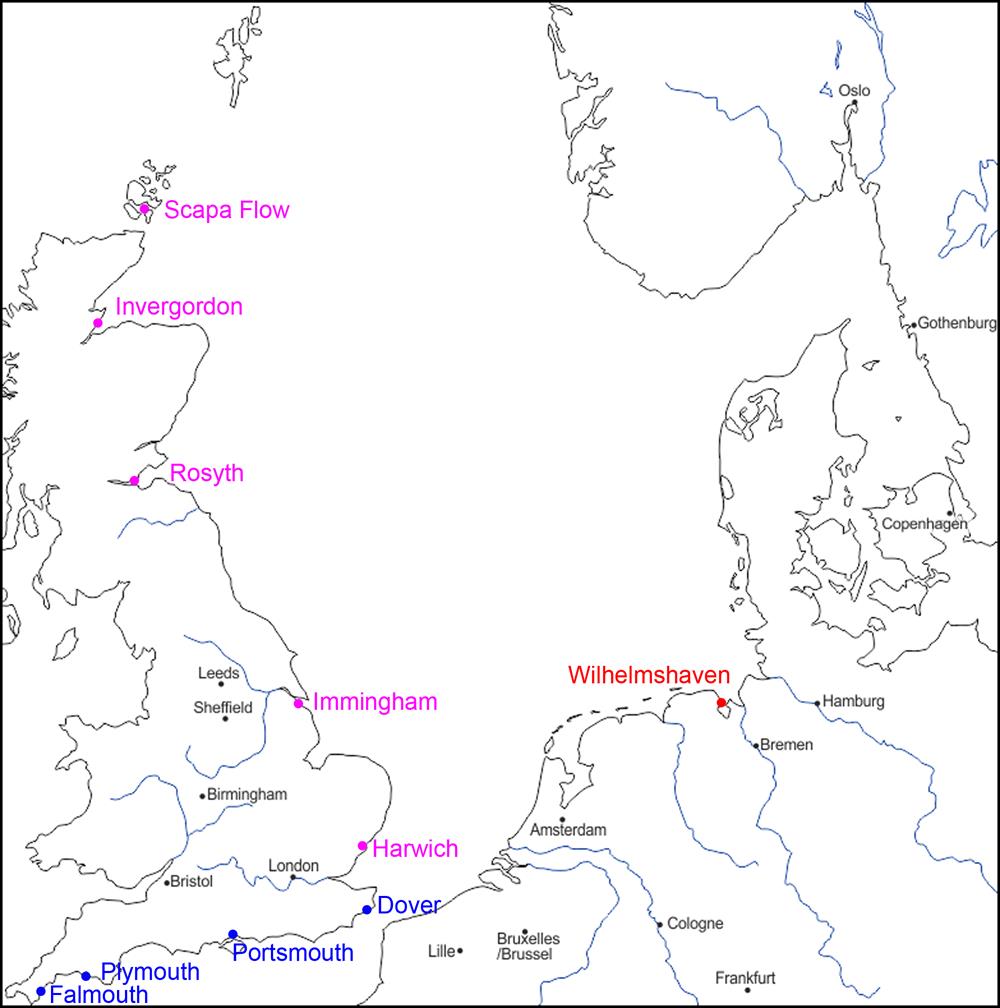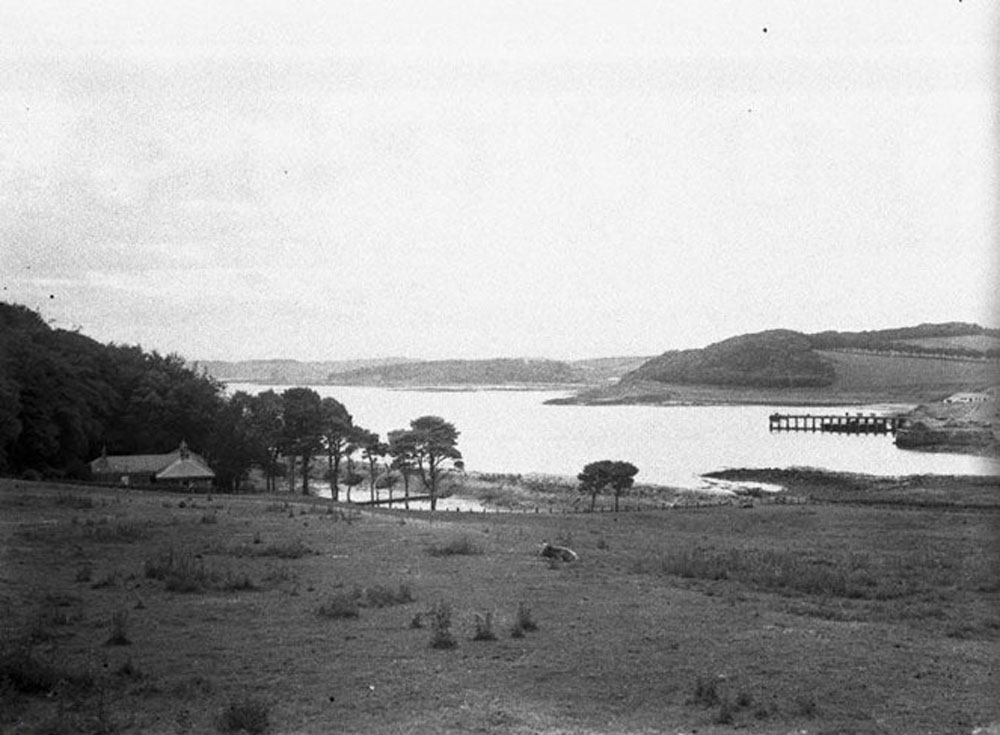04 – New Naval Bases
The traditional Royal Navy strategy in time of war was to place a large fleet of ships outside an enemy harbour to form a close blockade. However the invention of the submarine made that approach very dangerous – a large static fleet could be wiped out by submarines.
Instead the Royal Navy adopted a ‘distant blockade’ strategy – a large fleet was held on instant readiness in a well-guarded home port, from where they could launch an attack in open water if the enemy fleet took to sea. The submarine threat was much reduced when the fleet was underway, and able to travel much faster than a submerged submarine, so presenting a difficult moving target.
The problem with this approach was that the existing Royal Navy bases were all located along the south coast of England. They had been built to protect the English Channel from the old enemies of France and Spain.
New bases were urgently needed on the North Sea coast to counter a potential threat from Wilhelmshaven.
Three sites were chosen: Scapa Flow in Orkney, Invergordon at Cromarty Firth and Rosyth in the Firth of Forth.

The location of existing and new naval bases
In 1903, the Admiralty purchased land at Rosyth to turn St Margaret’s Hope into a new naval base.

St Margaret’s Hope around 1900

Construction work on Rosyth naval base and dockyard
| < 03 – A Naval Arms Race |
| Δ Index |
| 05 – Forth Defences 1902 > |
top of page
